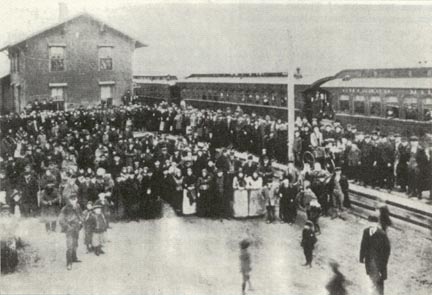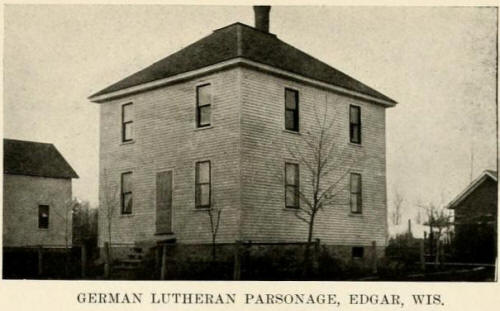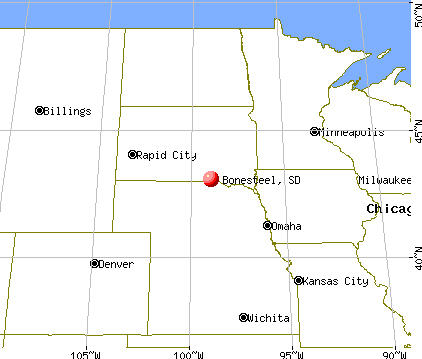Today, I'm going on with making list of churches which could be attended by the Schochenmaiers.
I stress one more time as I don't know about every moving into various places around New World, the easiest way for me is to follow the "first" Schochenmaiers where they got children (birth places) and where they were registred (national and state census).
Jacob Schochenmaier (1861-1923)
In May 1886 Jacob had immigrated to the United States through New York. He was 24 years old. Eight months later his son Jacob (1887-1975) was born in Alexander (McKenzie county, North Dakota). He was Jacob's first child (first Schochenmaier who had been born in America).
I don't understand how it would have been possible because on Wikipedia you read as follows:
If the town had been found in 1905, how could he have born in 1887 there??? But maybe he had lived around that place)))
I've found four churches in Alexander, ND:
1. Alexander Church of the Nazarene
2. Highland Lutheran Church
3. Our Lady of Consolation Catholic Church
4. Trinity Lutheran Church
But there is only one photo of a church (which one???) next to the school building

In November 1893 Mary (Maria) was born. I haven't found any precise information on where she had been born. Sometimes it was noticed just "Canada"... Well, we've got nothing. However, it sounds pretty strange ... in 1887 Jacob was born in the U.S., 6 years later his sister is to be born in Canada and then 4 years later Paul and Samual were born in the U.S. again... It means within 10 years they had relocated twice with two little children... From Alexander (ND) to Canada there are only 120 miles by car.
In 1897 Paul and Samuel, 1898 -Emanuel were born in Lynch, Nebraska. With Paul we can be sure, but there are some doupts concerning Samuel (if Paul wasn't born earlier! for example, in 1896). By the way, from Canada to Lynch (NE) they count up to 600 miles!!!

There are five churches:
Lynch Wesleyan Church
Christ Lutheran Church
Assumption Blessed Virgin Mary Church (Catholic)
Lynch United Methodist Church
Adventist Church
Wesleyan Church
Lutheran Church
In 1900 David, 1903 Charlotte and 1904 Lydia were born in Goodrich (Sheridan County, North Dakota). It's in 410 miles away from Lynch (Nebraska). About Charlotte and Lydia we cannot be absolutely sure, we just know they were born in North Dakota. Sometime for the last daughter it's noticed "Canada". According to other data, David was born in Harvey (Wells County, North Dakota). What a mess((( But it's important to point out that between Harvey and Goodrich there are about 30 miles.


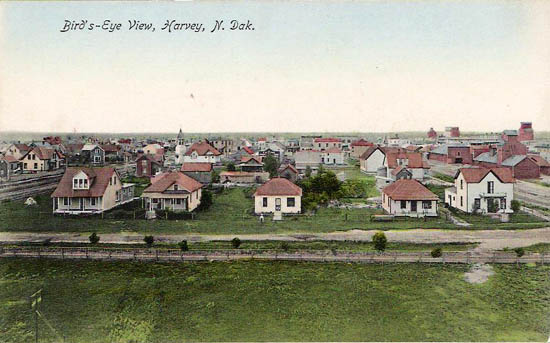
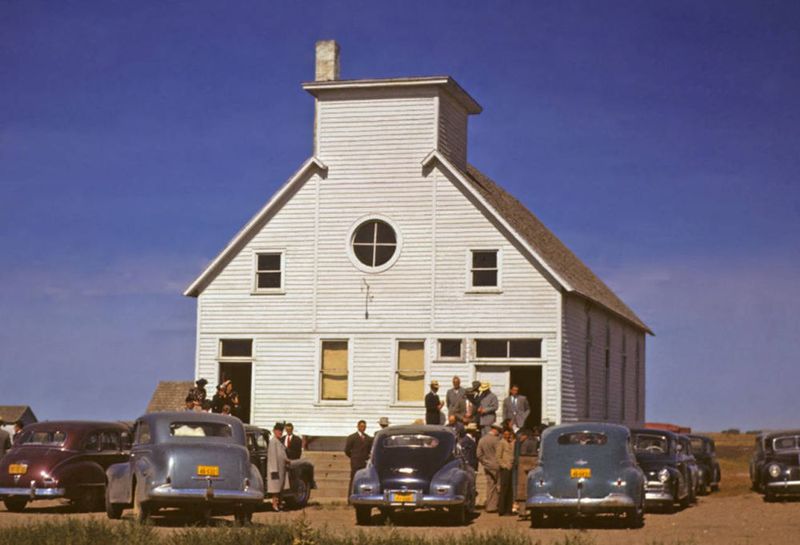
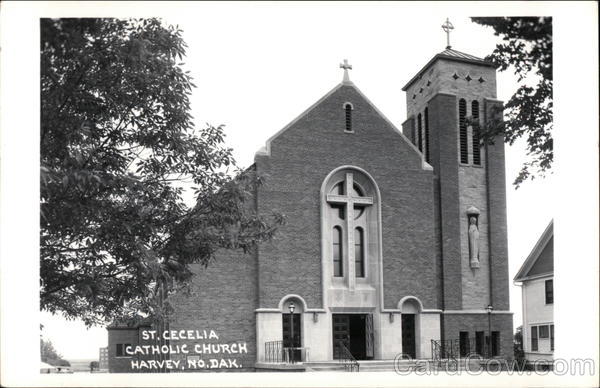





Have you noticed? It's the same situation as with Jacob (1887)))) David was born in 1900 in the township that would have been founded one year later. I start sugessting it's OK.
I've found five churches therein:

and Church of God

After having discussed with some of the Jacob's descendants, I can conclude that most of them are Adventists. I do realize that the subject is more than just delicate but ceveral persons made suggestions that the split between Michael (1859) and Jacob (1961) had been caused by that religious reasons. The descendants of Michael are mostly reformed Protestants (among others Baptists plus several Catholics, etc.) The question is since when Jacob was converted to Adventism? I've found the Jacob's immigration certificate from year 1923 where Jacob noticed that he was Baptist. Actually, it doesn't fit very well because at that time the brothers were not in the narrow communication anymore((. So I do not rely 100 per cent upon these thoughts.
All corrections are welcome!!!
I stress one more time as I don't know about every moving into various places around New World, the easiest way for me is to follow the "first" Schochenmaiers where they got children (birth places) and where they were registred (national and state census).
Jacob Schochenmaier (1861-1923)
In May 1886 Jacob had immigrated to the United States through New York. He was 24 years old. Eight months later his son Jacob (1887-1975) was born in Alexander (McKenzie county, North Dakota). He was Jacob's first child (first Schochenmaier who had been born in America).
I don't understand how it would have been possible because on Wikipedia you read as follows:
Alexander is a city in McKenzie County, North Dakota, United States. The population was 223 at the 2010 census. Alexander was founded in 1905 and is named after early North Dakota politician Alexander McKenzie.
If the town had been found in 1905, how could he have born in 1887 there??? But maybe he had lived around that place)))
I've found four churches in Alexander, ND:
1. Alexander Church of the Nazarene
2. Highland Lutheran Church
3. Our Lady of Consolation Catholic Church
4. Trinity Lutheran Church
But there is only one photo of a church (which one???) next to the school building

In November 1893 Mary (Maria) was born. I haven't found any precise information on where she had been born. Sometimes it was noticed just "Canada"... Well, we've got nothing. However, it sounds pretty strange ... in 1887 Jacob was born in the U.S., 6 years later his sister is to be born in Canada and then 4 years later Paul and Samual were born in the U.S. again... It means within 10 years they had relocated twice with two little children... From Alexander (ND) to Canada there are only 120 miles by car.
In 1897 Paul and Samuel, 1898 -Emanuel were born in Lynch, Nebraska. With Paul we can be sure, but there are some doupts concerning Samuel (if Paul wasn't born earlier! for example, in 1896). By the way, from Canada to Lynch (NE) they count up to 600 miles!!!
There are five churches:
Lynch Wesleyan Church
Christ Lutheran Church
Assumption Blessed Virgin Mary Church (Catholic)
Lynch United Methodist Church
Adventist Church
Wesleyan Church
Lutheran Church
In 1900 David, 1903 Charlotte and 1904 Lydia were born in Goodrich (Sheridan County, North Dakota). It's in 410 miles away from Lynch (Nebraska). About Charlotte and Lydia we cannot be absolutely sure, we just know they were born in North Dakota. Sometime for the last daughter it's noticed "Canada". According to other data, David was born in Harvey (Wells County, North Dakota). What a mess((( But it's important to point out that between Harvey and Goodrich there are about 30 miles.

Harvey is a city in Wells County, North Dakota, United States. The population was 1,783 at the 2010 census. Harvey was founded in 1893 as a division point by the Soo Line Railway. According to the book published in 1981 on the 75th anniversary of the town's incorporation as a city in 1906, Harvey, ND is believed to have been named for a director of the Soo Line Railway: Col. Scott William Harvey of Minneapolis, Minnesota.


There a lots of churchs in Harvey. Below you'll find some of them whose pics are on the net:

Harvey Mennonite Brethren Church, 1948

St. Cecelia Catholic Church

Bethel Church east of Harvey

Wesley United Methodist Church

First Lutheran Church

Victory Baptist Church
Let's switch to Goodrich:

Goodrich is a city in Sheridan County, North Dakota, United States. The population was 98 at the 2010 census. Goodrich was founded in 1901.
Have you noticed? It's the same situation as with Jacob (1887)))) David was born in 1900 in the township that would have been founded one year later. I start sugessting it's OK.
I've found five churches therein:

and Church of God

After having discussed with some of the Jacob's descendants, I can conclude that most of them are Adventists. I do realize that the subject is more than just delicate but ceveral persons made suggestions that the split between Michael (1859) and Jacob (1961) had been caused by that religious reasons. The descendants of Michael are mostly reformed Protestants (among others Baptists plus several Catholics, etc.) The question is since when Jacob was converted to Adventism? I've found the Jacob's immigration certificate from year 1923 where Jacob noticed that he was Baptist. Actually, it doesn't fit very well because at that time the brothers were not in the narrow communication anymore((. So I do not rely 100 per cent upon these thoughts.
All corrections are welcome!!!










